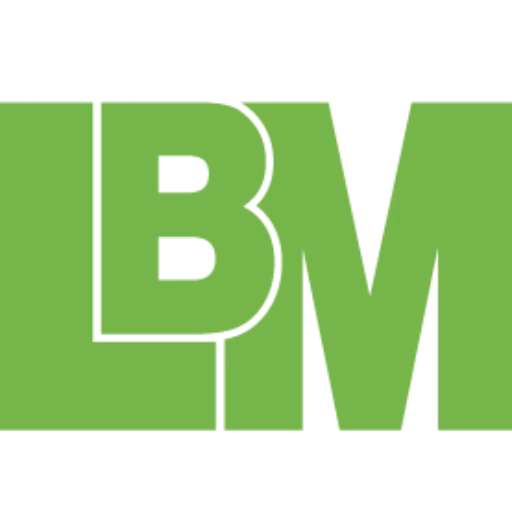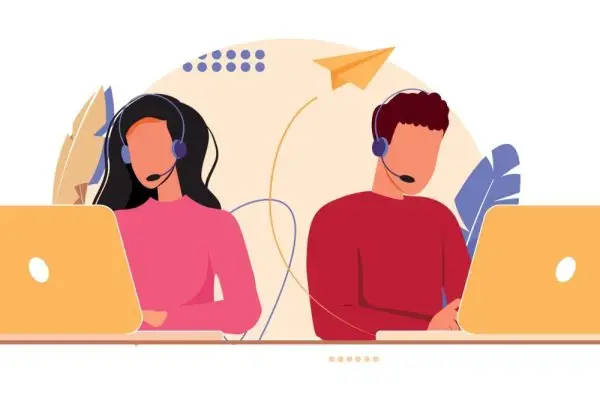What is Marketing Automation for Lawyers?
What is the most common question marketing companies hear from law firms? Lawyers want to know how to increase lead volume. While more leads are important, what they often overlook is what they do with those leads.
The way a firm responds to leads and handles their intake generally, is often the easiest thing to fix — the lowest hanging fruit if you will — when addressing the problem of needing more clients. (Because that is the real ask, right? Not more leads. More clients.) The best practices, which we will review in detail before diving into software tools, basically boil down to responding to incoming leads immediately and repeatedly.
If you take nothing else away from this article, take this: the firms that respond first typically get the client. And while it used to be the case that lawyers were terrible about responding to incoming leads, that is not always the case today. Older studies had as much as 60% of firms failing to respond, while a more recent study pegged the number at 40%. More importantly, if you are in a competitive market and practice area (personal injury), the median response time can be as little as 19 minutes. Too many firms dismiss lead response time concerns with blanket statements that they call everyone back immediately, when in reality they are following up hours later at best, and days later at worst.
The other benefits of a strong intake system include reducing the need for additional support staff and reducing the admin time that your existing staff and attorneys spend on opening new files and obtaining retainer agreements. How so? At a traditional firm, the intake process includes a paper form that has to be entered manually into a computer, billing is done in person at the receptionist desk for the initial retainer, and there is, of course, an in-person consultation. The total time is a few hours per client to get them signed. In a modern practice, an attorney can have a phone consultation in less than 15 minutes, followed by about three clicks of a mouse to send over an E-signed retainer agreement, an intake form, and an invoice, which allows for electronic payment.
Automated Response or A Lot of Staff?
Let’s be honest: there is no substitute for the human touch. However, unless you are flush with cash, you probably cannot staff your office’s reception line 24/7. And even if you can, there are time periods where you will be too busy with incoming phone calls or existing business to respond to every lead in a timely manner.
Automation here is key. Imagine a world where every missed call and every form submission on your website is answered instantaneously with an email and a text message. Those messages may simply promise a follow-up phone call from the firm, or they can go even further and give the potential client a link to a self-scheduling tool where they can book their own 15-minute consultation. Automated follow-ups for when a lead does not schedule a consultation can be added as well through a “drip campaign.”
And then you take it to the real next level: once they have booked that initial consult, an intake form should arrive in their inbox and on their phone automatically. This way, you will have all of the information and documents you need to discuss their case with them during that initial meeting.
Finally, how about signing them up? Do you have electronic retainer agreements with E-sign? Does this integrate with your trust-compliant billing?
We will review a number of tools below that accomplish these tasks and more. While no single tool will be perfect or check all the boxes, many of them can check most of the boxes and put you ahead of most of your competition.
Marketing Automation & Intake Software
Lawmatics
Lawmatics Is currently the king of marketing automation software for law firms. All the things described above can be done in Lawmatics – from SMS follow-ups to bookings to invoicing. You can set up drip campaigns to send periodic reminders or emails about topics relevant to their legal inquiry. This is basically an all-inclusive suite that covers everything up until the actual practice of law. The only thing missing here is actual matter management, so if you want to use this as a way to manage your active cases, be prepared for a lot of workarounds or set up an integration with one of the supported practice management platforms.
Are there downsides? Absolutely. No software platform is perfect, and this platform tries to cover a lot of bases for a very diverse legal industry. That being said, it is still the best at marketing automation for law firms.
Clio Grow
Clio Grow Is another legal CRM. While its focus is not on marketing automation, and indeed, it has very little automation at all, it does have a lot of the time-saving tools that law firms need to turn their intake into a quick minutes-long process. It has intake forms. It has electronic signatures of documents. And of course, it integrates with Clio’s ever-popular law firm practice management.
Lawcus
Lawcus gets an honorable mention here as an up-and-comer. It is a combination of CRM, marketing automation, and practice management platform. Obviously, having everything all in one is a huge benefit here — there’s no worrying about broken connectors between cloud-based software. Also, it is a lot cheaper than buying the other software piecemeal. It has a lot of marketing automation features and its development pace is a lot more rapid than the competitors. Keep in mind though that this is a small company and a newer and less developed platform so that you will find bugs.
Budget Choice
No list is ever complete without a free or extremely low-cost alternative. Mautic is free and open-source marketing automation software that can set up automated email campaigns, SMS leads, and intake forms. It would take additional workarounds to set up a retainer agreement, as it does not seem there is any document automation or e-sign function here, so you would need to set that up in another platform, perhaps as part of automation through Zapier. Or run your retainer agreements and invoicing through your practice management system and leave the intake forms, lead response, and marketing automation to Mautic. Setup is extremely complex and requires your own server, so this is best left to firms with a full IT team and lots of time for implementation.
Pick a Tool That Simplifies
When you rethink your intake process, consider tools that will enhance your efficiency and greatly simplify the systems in your office. Some of these platforms are all-in-one, which means fewer tools to learn and break. Others are simply free, but a lot more work to set up. And still, others can replace additional tools — document automation tools, practice management tools, marketing automation tools.
Whichever tool you pick, focus on the big picture: shrinking your lead response times to seconds, at best, and following up with leads repeatedly. Doing more with the leads you have is the most cost-effective way to grow your practice. Once you do that, then look to lead providers and marketing agencies for more leads.
When Should You Follow Up?
If you are dealing with online leads, the best advice is always to reach out as soon as possible after the lead comes in. If the potential client does not answer immediately to your outreach, you will need to have a strategic plan for how and when you will follow up with the lead.
The general rule of thumb after your initial outreach is to follow up within 24 hours via call, text, and email. If you do not hear anything back after the first follow-up, you want to continue to follow up through different methods of contact during different times of the day. There are many reasons a lead may not answer immediately, so persistence is key.
If a lead seems particularly interested or enthusiastic, you may want to follow up more frequently. Conversely, if a lead seems unresponsive or disinterested, you may want to space out your follow-ups more. The most important thing is to not be a nuisance and to always give the potential client an easy way to opt out of further contact.
What Should You Say?
When following up with online leads, it is important to remember that you are essentially cold-calling these individuals. As such, you want to come across as professional, knowledgeable, and friendly. You also want to make sure that you are tailoring your pitch to the specific individual.
A good way to do this is by quickly reviewing their online profile before reaching out. If they have filled out a form to be contacted by an attorney, you will likely have some information about their case. Use this information to personalize your message and let them know that you are taking the time to review their specific situation.
You also want to make sure that you are providing value in your follow-up message. For instance, you could provide resources that would be helpful to the individual or give them a quick overview of your experience with similar cases. If you can show the potential client that you are an expert in their specific situation, they are more likely to pick up the phone when you call.
What Tone Should You Have When Following Up?
When following up with a lead, it is not only important when you follow up but also the tone you set when following up. The key is to strike a balance between being too pushy and not pushy enough. You don’t want to come across as desperate or needy, but you also don’t want the client to think that you don’t care about their case. You also want the potential client to know that you read the information they provided on the lead form and took the time to understand their situation.
A good way to strike this balance is by using what is called the broken record technique. This means that you continue to follow up with the potential client in a polite and professional manner until they either engage with you or explicitly ask you to stop contacting them. This technique can be frustrating, but it is often effective in eventually getting a response from the lead.
When following up with online leads, it is important to remember that timing is everything. You want to reach out as soon as possible after receiving the lead, but you don’t want to be too pushy or seem desperate. It is also important to personalize your message and show that you have taken the time to review their specific situation. Finally, you want to use the broken record technique to continue following up until the potential client either responds or asks you to stop. By following these guidelines, you will be able to maximize your success rate in converting online leads into paying clients.
What If The Client Doesn’t Respond?
It’s inevitable that there will be times when a client doesn’t respond to your initial outreach attempts. This doesn’t necessarily mean that they’re not interested; they could simply be busy or distracted. In these cases, it’s important to continue following up at regular intervals until you either get a response or determine that the lead is no longer viable.
How Often Should You Follow Up After That?
Once you’ve finally made contact with the lead and had a conversation about their case, you’ll want to start following up on a more regular basis (usually once every week or two). At this point, your goal should be to keep the lead warm until they’re ready to move forward with hiring an attorney.
You can do this by sending them helpful resources, keeping them updated on any developments in their case, and checking in to see how they’re doing. The key is to maintain communication without being too pushy or sales-y. If you can do this, you’ll greatly increase your chances of eventually converting the lead into a paying client.
If you don’t hear back from the lead after a reasonable amount of time (usually 4-6 weeks), it’s probably safe to assume that they’re no longer interested and move on.
Legal Brand Marketing is Here to Help
While every lead and situation is different, having an effective and structured follow-up strategy is essential to having success with online leads. Our team is here to help you every step of the way, from initial outreach to closing the deal. We can help review your follow-up techniques and give you insight into what’s working (and what’s not). Contact us today to learn more about how we can help you convert more online leads into paying clients.






